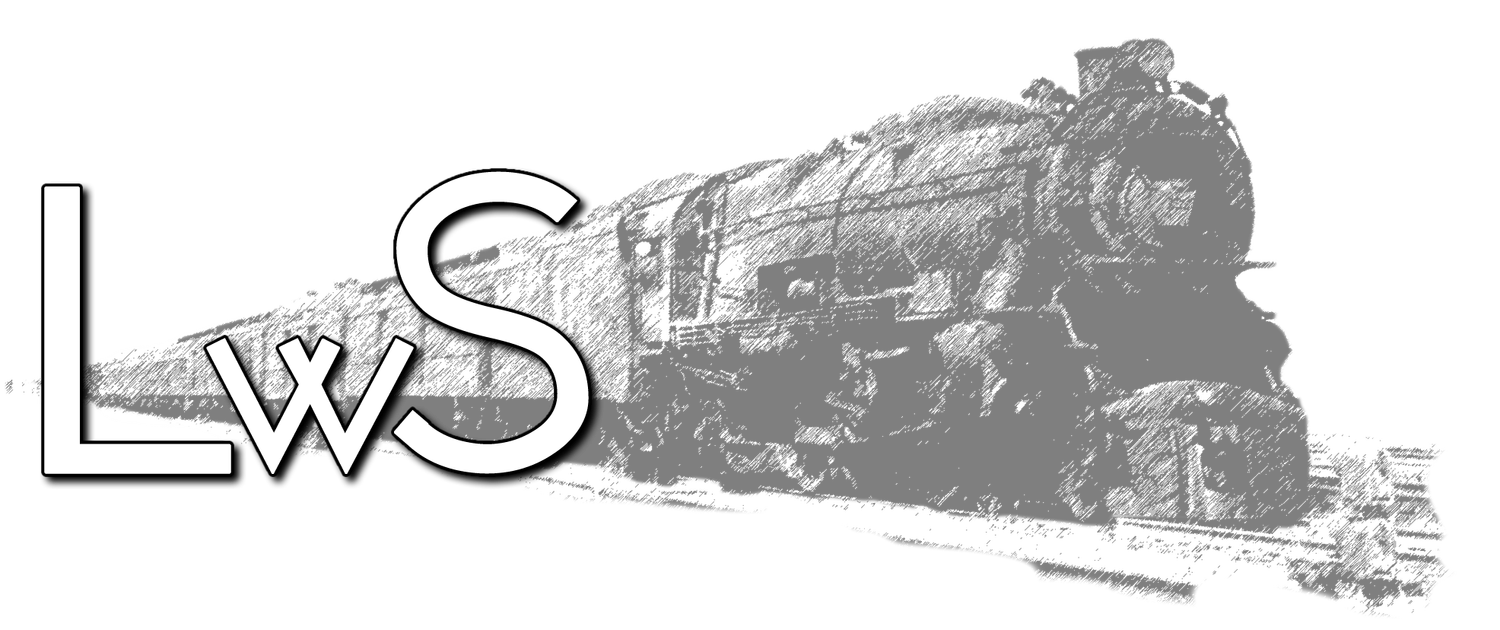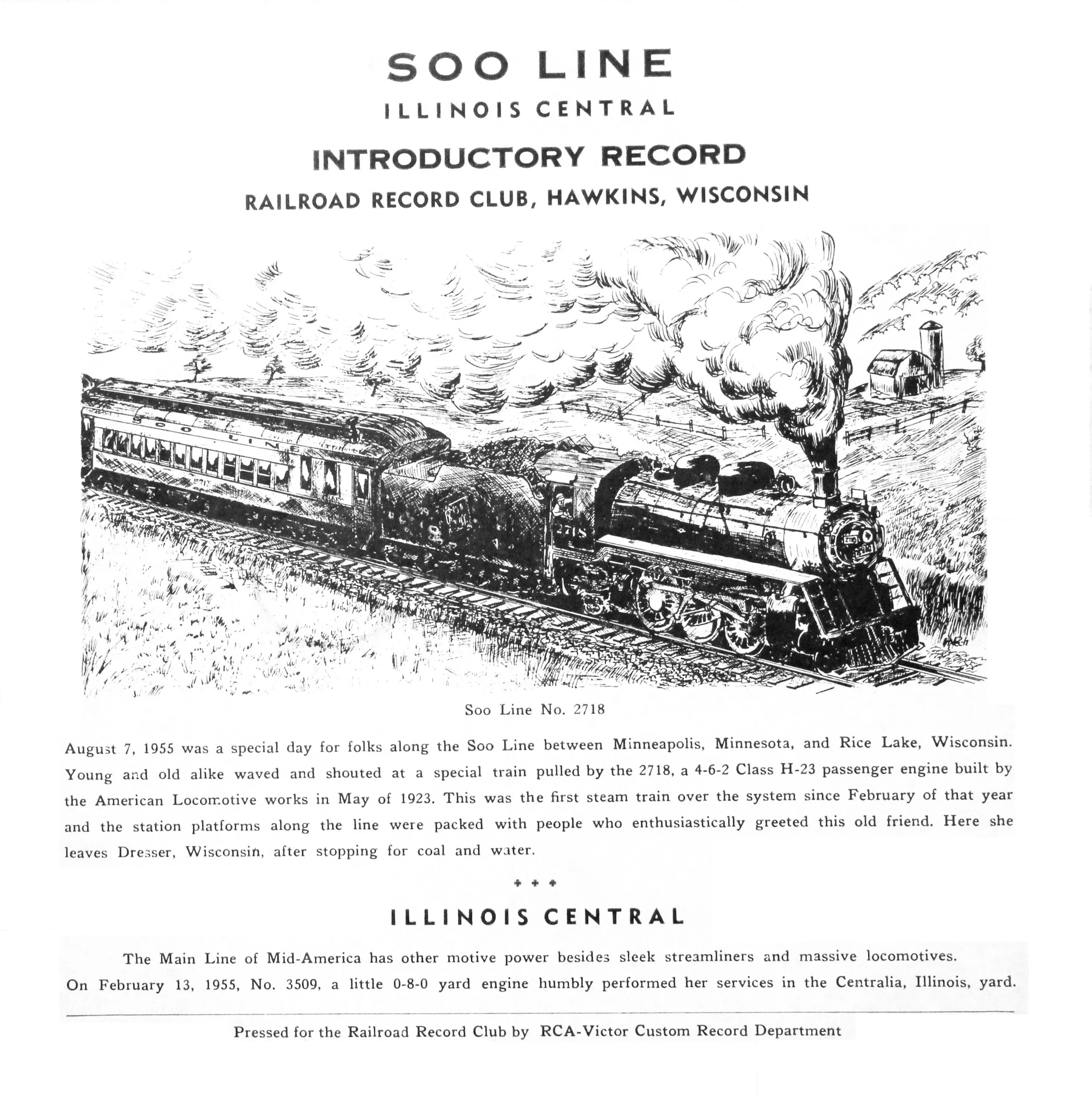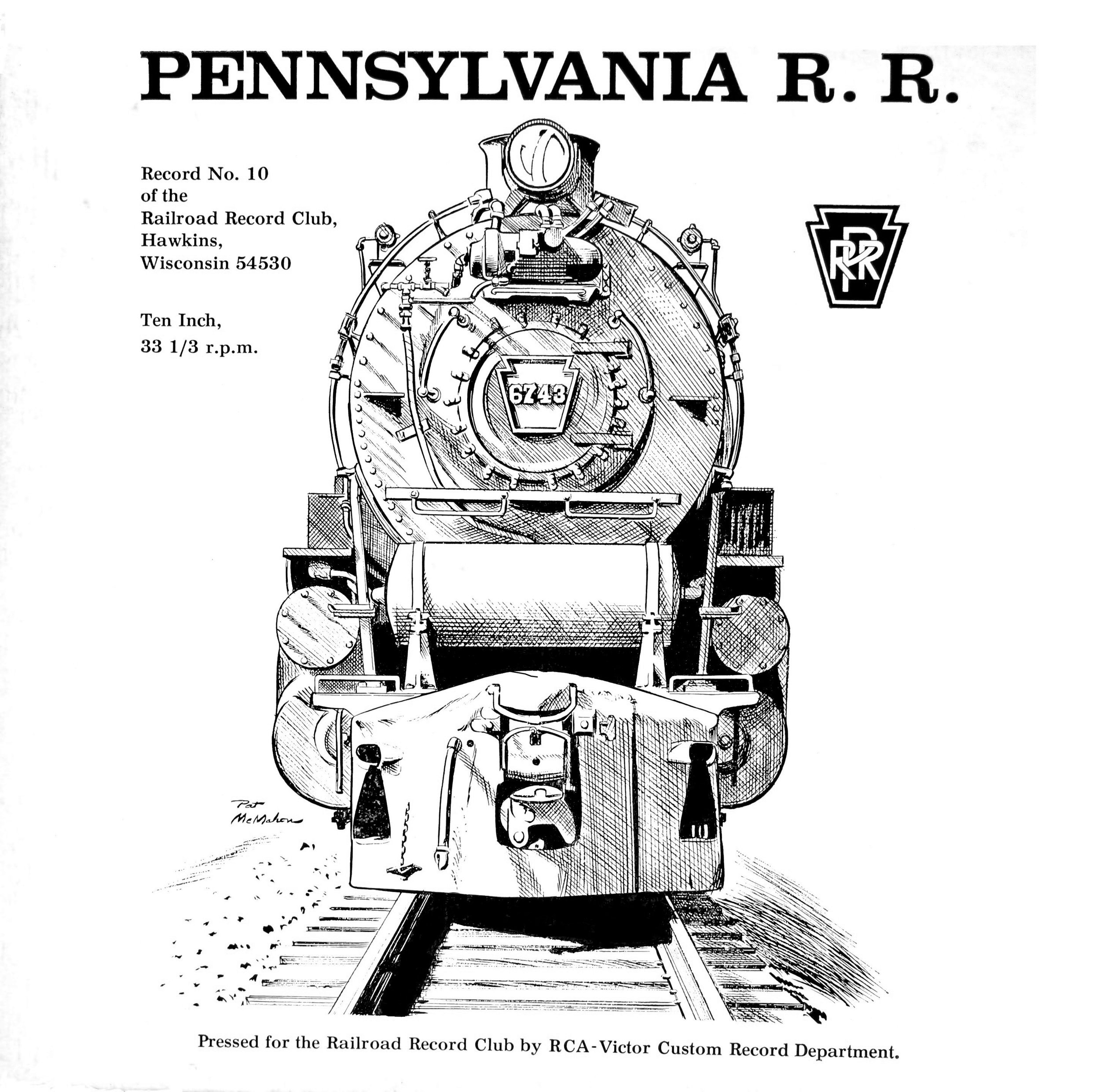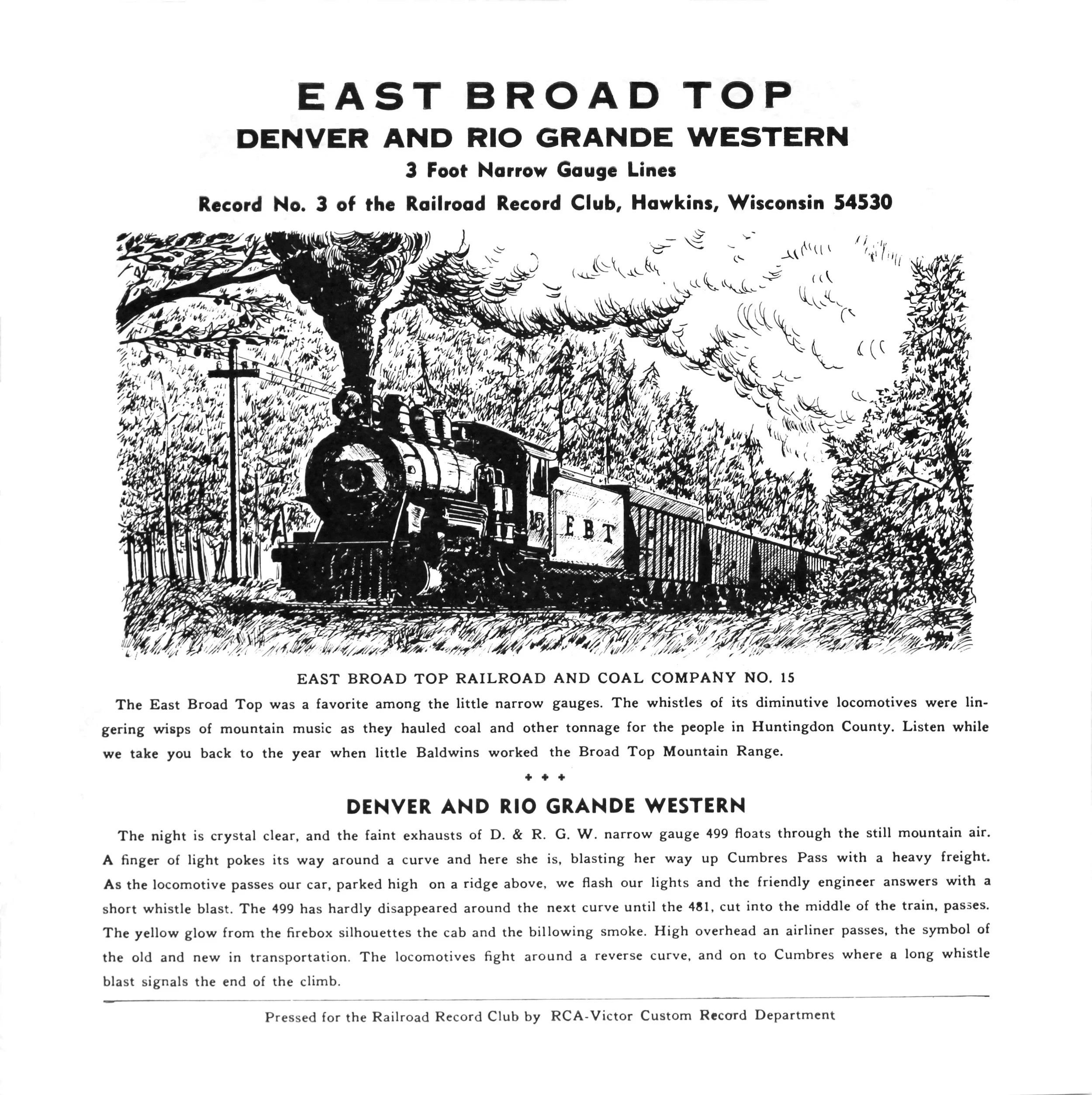LwS EXTRA: “William A. Steventon & The Railroad Record Club, Part 3”
This episode of LwS EXTRA concludes the story of William A. Steventon and The Railroad Record Club. Featured is a fun and interesting conversation I had with Ken Gear concerning his acquiring of the entire Steventon estate of his recordings, master tapes, acetate discs, original artwork, and hours of recorded content never released as part of the Railroad Record Club.
By the way… AI is used in this episode. There is NOT an actual recording of William A. Steventon reading his advertisement to encourage membership in the new Railroad Record Club in 1989.
This episode is quite long so sit back and enjoy.
The above images show some of the contents of William A. Steventon’s archives as Ken Gear found them in the outbuilding on the estate liquidator’s property.
From top row left to right - The box that contained unreleased Steventon railroad and traction recordings; the box containing the master tapes for the released RRC records; the box holding the 3-inch pre-RRC master tapes; another box holding more 3-inch master tapes.
Bottom row left to right - 3-inch master reels for the pre-RRC homemade records; a box containing the print blocks for printing the RRC album covers; the stamping plates used to press some of the RRC records showing the damage that occurred while in the poor storage facility.
Clicking on an image will open a larger version.
Prior to having his records pressed at RCA Victor’s Custom Records facility in Indianapolis, Indiana, Steventon made his offerings available by making homemade recording on a record cutter using Audiodisc blanks.
Top row left to right - A package of Audiodisc blanks as Steventon would have bought them; in a pack of 5; Steventon’s “Pennsylvania Railroad” offering with his hand-stamped label; the mailing envelope a customer would have received the records in.
Bottom row left to right - I found these examples of pre-RRC homemade releases in the collection of Jim Van Brocklin, who was a big fan and supporter of Steventon’s work. Unfortunately, out of the 6 discs I found, only one was barely playable. All the others were damaged beyond repair. In order to save whatever morsels of the acetate were left on the discs, I painted a thin coat of diluted PVA glue over the entire surface of both sides of the record.
Acetates do not hold up to poor storage conditions. They must be kept in a neutral temperature environment with very little humidity. These discs were placed in a metal milk container out in a garage were water dripped on them constantly. None of the labels have legible writing on them, and the records were almost glued to each other. Hours were spent trying to clean the only record that had a chance of being played. It was then digitized on my Technics SP-10 turntable using multiple magnetic cartridges and styli at different tonearm weights in order to get the best possible playback. After the disc was digitized, I then ran the audio through my restoration software to remove as much of the noise as possible without degrading the original recording.
Unfortunately, neither Ken or myself can identify the recording with 100 certainty. It may not even be a Steventon recording… but it will give you an example of how the Audiodisc records can sound if they are not taken care of properly.
Further listening
This is William A. Steventon’s first release for the Railroad Record Club. Simply called “Introductory Record”, side 1 featured a SOO Line excursion train between Minneapolis, Minnesota and Rice Lake, Wisconsin pulled by engine 2718, a 4-6-2 Class H-23 engine on August 7, 1955. Side 2 of the record featured Illinois Central engine 3509 performing switching duties in the Centralia, Illinois yard on February 13, 1955.
Clicking on an image will open a larger version.
Record Number 1 of the Railroad Record Club was originally released as a 10” disc. Side 1 features the Chicago, St. Paul, Minneapolis, & Omaha (Wabash) Railroad. The recording was made in the cab of engine 576 as it performed switching duties in Bluffs, Illinois on February 15, 1955.
This recording was taken directly from an RRC release from the collection of Jim Van Brocklin. As with the Audiodisc record heard above, it was stored in horrible conditions and needed to be restored before it was able to be played satisfactorily.
Clicking on an image will open a larger version.
RRC Record 10 was the first heard by Ken Gear, and it’s the recording that got him hooked on the Railroad Record Club and railroad sound recording records to begin with. Both sides of the 10” record are featured here.
Both sides feature Pennsylvania Railroad engines in various locations in Pennsylvania and Maryland. Be sure to look at the images to determine what you’ll be hearing.
Clicking on an image will open a larger version.
RRC 4 contains incredible soundscapes featuring Baltimore & Ohio railroad engine 7609, a colossal EM-1. This is side 2 of the record and it features the EM-1 picking up it’s train from Painesville, Ohio, and slipping out of the yard, clattering over the New York Central tracks and heading out on its run. This is perhaps one of Steventon’s best recordings.
Clicking on an image will open a larger version.
RRC number 14 was selected by Ken Gear for inclusion here as it’s one of his favorites. This is another example of William A. Steventon’s “sound collage” recordings where he tried to include as much as he could of all the sounds around him while he was recording Pacific Electric’s numbers 5112 and 00161. Listen for the Good Humor ice cream truck following behind the street car. Be sure to click on the above left image in order to follow along with the recording.
Record 25 of the RRC featured recordings of the Illinois Terminal interurban railroad. However, the last selection on side 2 of the record is perhaps the most interesting. It was made on October 14, 1955 and features IT Car 203 having severe mechanical problems during one of its runs. Be sure to click on the images second from the right for a more detailed description of what occurred while the recording was being made.
Clicking on an image will open a larger version.
The episode opens with Steventon introducing RRC number 3, which features a recording of East Broad Top engine number 15. The EBT was a 3-foot narrow gauge railroad that operated in Huntington County, Pennsylvania and hauled coal, iron, lumber, and passengers to connections with the Pennsylvania Railroad. Once again, this recording was taken from an original 10” RRC release from the collection of Jim Van Brocklin.
It’s because of Steventon’s recording of East Broad Top engine number 15 that I chose the photograph that’s on the home page of the Living with Steam website. Steventon took the picture while he was making his EBT recording of engine 15 at Silver Springs, PA.
Clicking on an image will open a larger version.
Be sure to visit The Trolley Dodger website at https://thetrolleydodger.com/online-store/ to purchase the CDs of William A. Steventon’s recordings and much more.
E N D






































